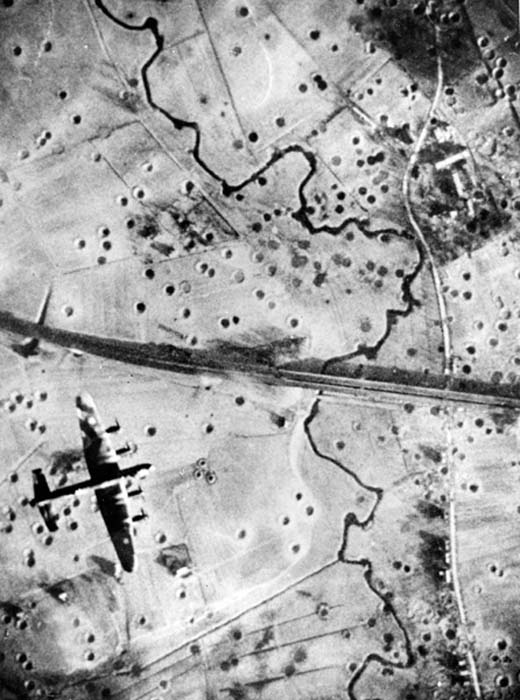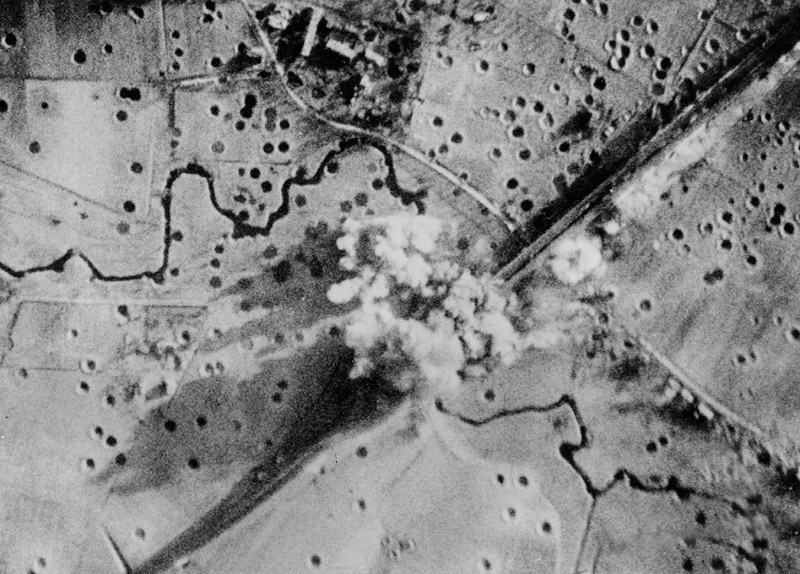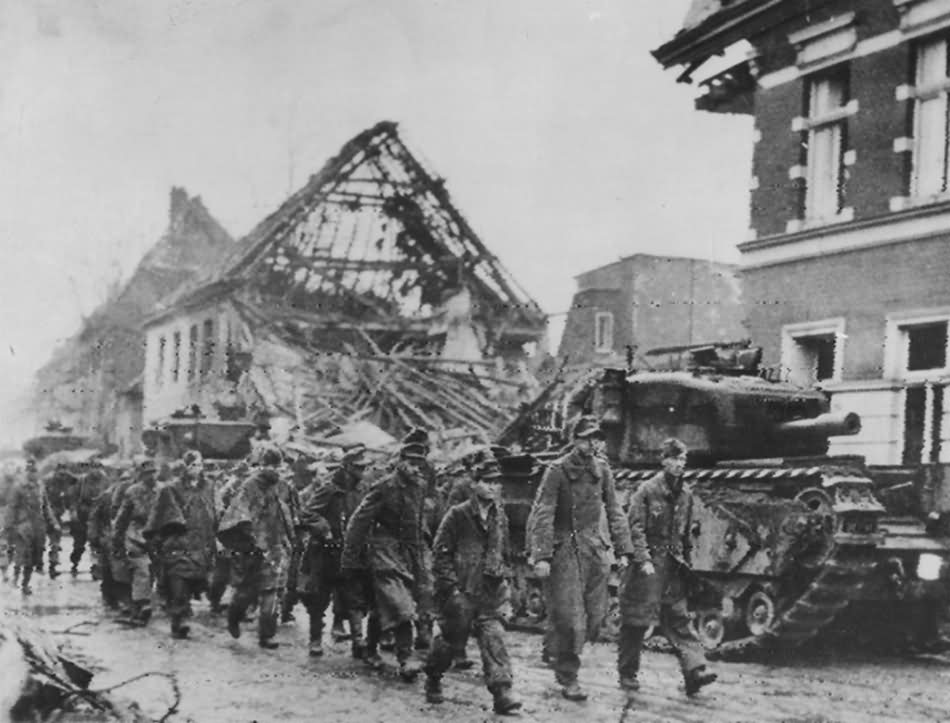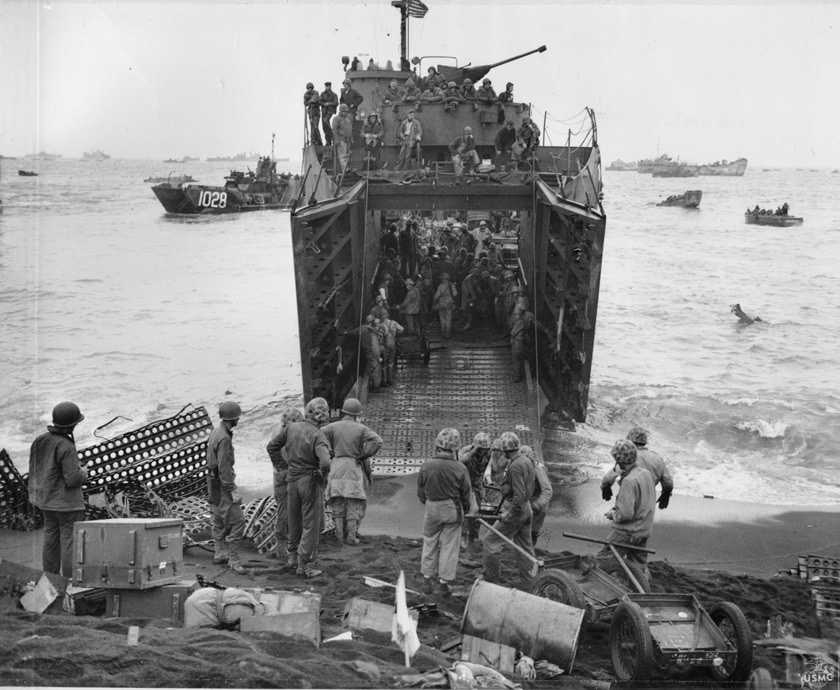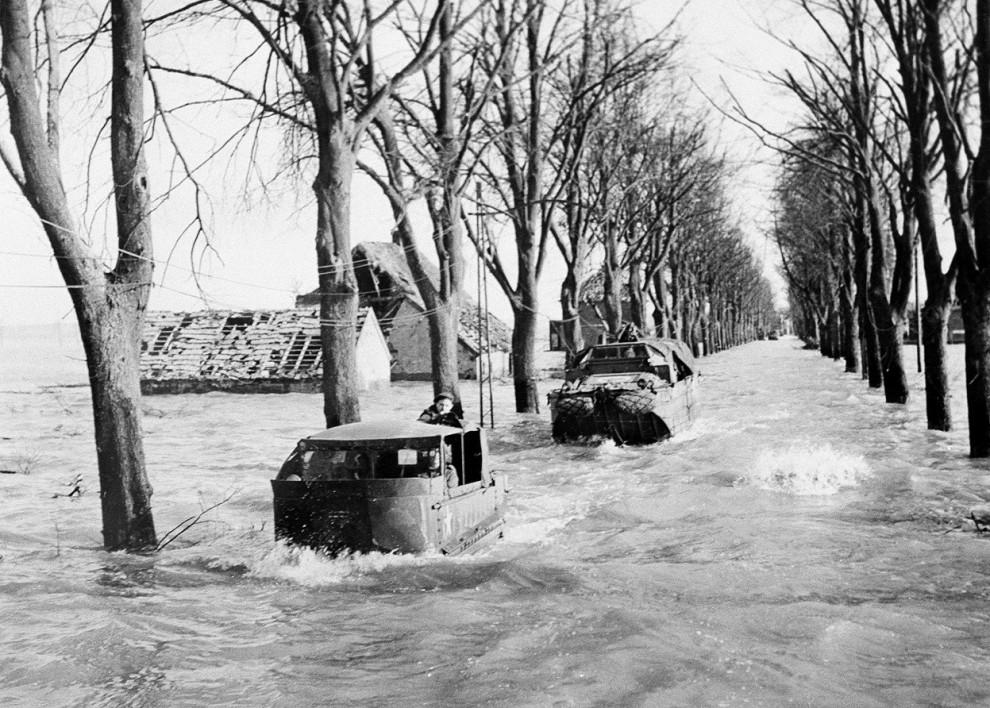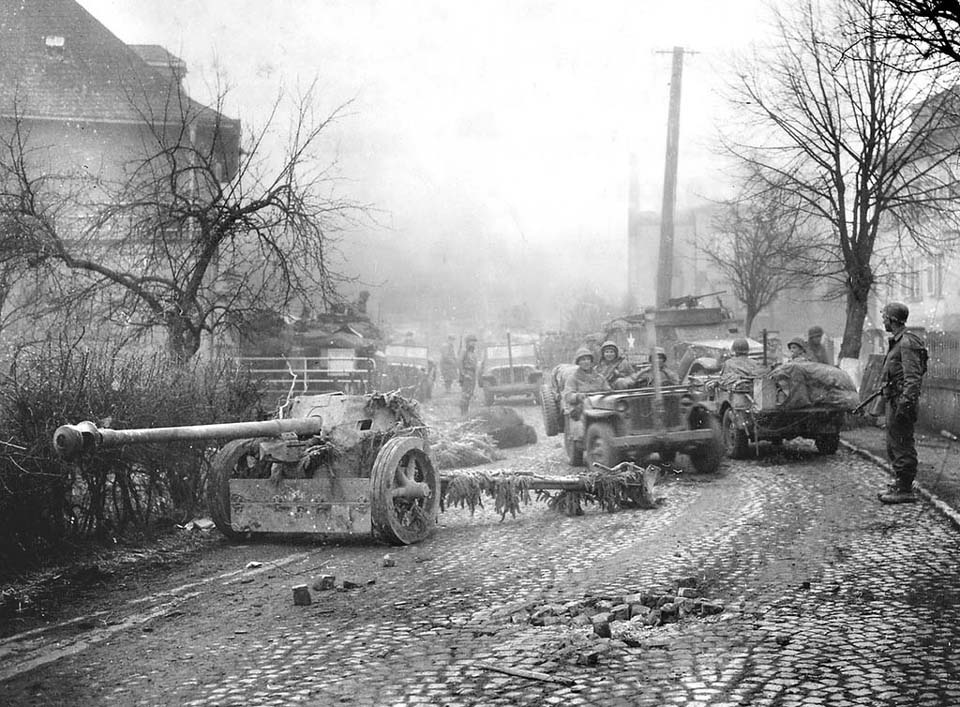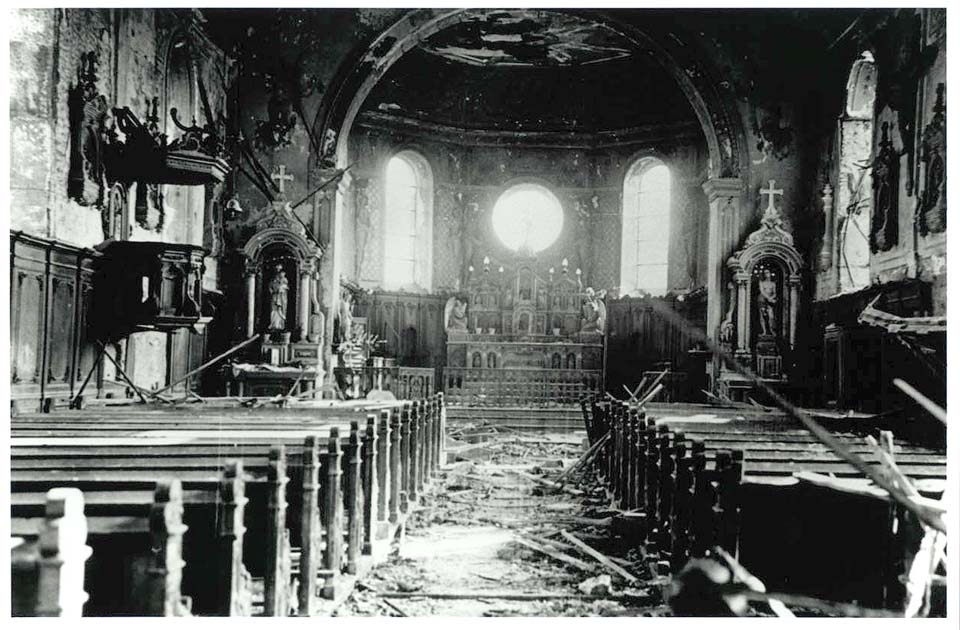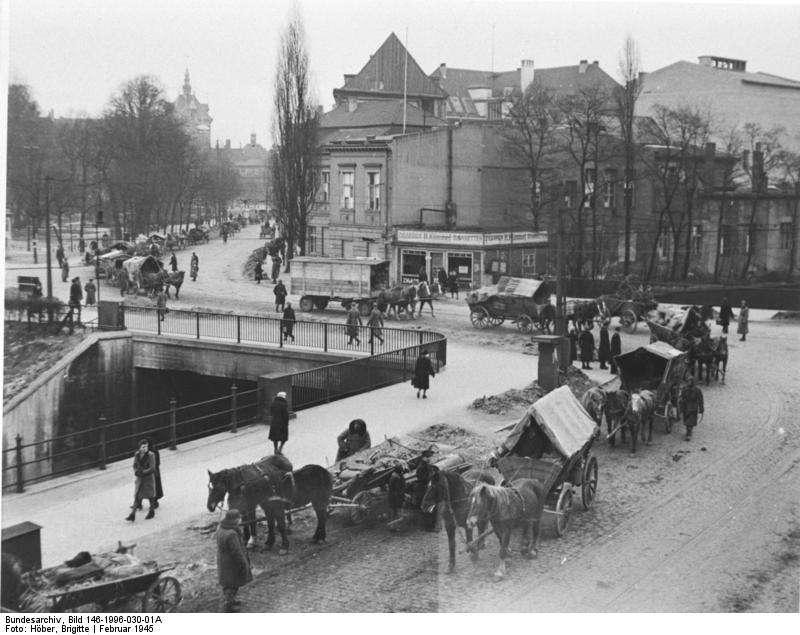Air Operations, CBI
BURMA- Nearly 100 10th Air Force fighter-bombers attack troops, artillery, motor vehicles, pack animals, supplies and other targets in areas close to active battle fronts.
- 29 P-47s support Allied ground forces in the Namhsan area.
- 11 P-47s provide close support for Allied ground troops around Mongmit.
- During the night, 427th Night Fighter Squadron P-61s mount the first in an ongoing series of intruder and heckler missions against troops, road traffic, and airfields.
- 341st Medium Bomb Group B-25s attack convoys in the Hengyang area.
- 19 14th Air Force fighter-bombers attack occupied villages and road, rail, and river traffic, especially between Hankow and Nanking.
- 10 38th Medium Bomb Group B-25s, organized into two-plane elements, attack a Japanese convoy composed of 4 merchant vessels and 4 escorts in the South China Sea. 1 destroyer is sunk and a freighter is left in burning condition.
Air Operations, East Indies
XIII Bomber Command B-24s attack supply dumps and Japanese Army ground troops on Borneo and the Labuan and Tarakan airfields there.
[Air Operations, Europe
In Operation CLARION, whose objective is to cut transportation lines in central Germany and isolate the western Front, 9,000 Allied bombers and fighters from bases in England, France, Belgium, Holland and Italy attack rail and road targets over 647,497 sq km of the Reich. The 8th Air Force alone attacks 30 targets, including Lüneberg, Halberstadt, Ludwislust and Göttingen.
RAF BOMBER COMMANDDaylight Ops:
- 167 Lancasters of No. 3 Group in forces of 85 and 82 aircraft are sent to oil refineries at Gelsenkirchen and Osterfeld. A Film Unit Lancaster of No. 463 Squadron, No. 5 Group, accompanies the Gelsenkirchen force. Both targets are accurately bombed in clear weather conditions.
- 1 Lancaster is lost on the Gelsenkirchen raid.
Minor Ops:
- 73 Mosquitos are sent to Berlin, 6 to Bremen, 4 to Erfurt and 3 on 'siren tours' to various towns in Germany, 35 Lancasters are sent to the railway viaducts at Altenbeken and Bielefeld, 19 aircraft make Resistance flights, and there are 23 Mosquito patrols and 48 RCM sorties.
- 1 Mosquito from the Erfurt crashes in Belgium.
GERMANY:
- The 8th, 9th, and 15th Air Forces inaugurate Operation CLARION, a general assault against the German transportation system.
- 1,372 8th Air Force B-17s and B-24s attack a vast array of primary targets and targets of opportunity. At targets without adequate flak defenses, the heavy-bomber formations attack from only 10,000 feet, about one-third their normal bombing altitude.
- 7 heavy bombers and 13 of 817 VIII Fighter Command escorts are lost.
GERMANY:
- More than 450 9th Air Division bombers attack a vast assortment of rail targets, including 46 rail bridges, 11 stations, and 12 marshalling yards. Many of the missions are conducted at low level, the first such 9th Air Force bombing attacks since May 1943.
- 9th Air Force fighters mount 1,082 effective sorties.
- 3 bombers and 13 fighters are lost.
- 8th and 9th Air Force fighter pilots down 35 Luftwaffe fighters over Germany between 1210 and 1745 hours.
GERMANY:
- During the night, after A-26 and B-26 night pathfinders mark the target, 31 410th Light Bomb Group A-20s attack the communications center at Blatzheim with good results.
- 12th Air Force B-25s attack marshalling yards at three locations.
- XXII TAC P-47s attack communications centers, road traffic, gun emplacements, and dumps, as well as bombing the Bergamoand Ghedi Airdromes.
- During the night, XXII TAC A-20s and A-26s attack airdromes and marshalling yards throughout northern Italy.
AUSTRIA:
- 15th Air Force heavy bombers attack various rail targets throughout Austria.
- As part of Operation CLARION, 15th Air Force heavy bombers attack numerous rail targets in southern Germany.
- 15th Air Force heavy bombers attack rail targets.
Air Operations, Philippines
- 100 FEAF B-24s attack Japanese Army ground defenses and Japanese-held caves near Fort Stotsenburg at distances of only 1,000 yards from US 6th Army ground troops, and V Fighter Command fighter-bombers attack the same targets with napalm, high-explosive bombs, and machine guns.
- B-24s attack supplies near Baguio.
- V Bomber Command A-20s attack troops in the Baguio area.
- V Fighter Command P-47s attack Japanese-occupied areas of Corregidor.
- P-51s attack Angin and Marikina.
- Under guidance of a US Marine Corps air liaison party attached to Filipino guerillas on Luzon, 308th Bomb Wing light bombers begin direct-support operations in behalf of guerilla units. In this case, the Marine air liaison party’s first assignment is bringing 12 A-20s on target at the Japanese-held port of San Fernando, Luzon. Para-frag bombs are dropped with great accuracy, as are 500-pound bombs dropped in a follow-up strike by 1st Marine Aircraft Wing SBDs. As a result of the air support, guerrilla gains on the ground are considerable.
Air Operations, Volcano Islands
- Task Group 52.2 TBMs and FMs provide support for US V Marine Amphibious Corps ground forces on Iwo Jima.
- During morning searches for ditched aircrews from the damaged USS Saratoga, 2 VT(N)-90 are downed by friendly fire. 1 crew is rescued, but the other 3 airmen are lost.
Battle of the Atlantic
On February 17 U-300 attacks Convoy UGS-2 and torpedoes two ships, the British Regent Lion (9551t) and the American Michael J. Stone (7176t). Two days later the U-boat is attacked by the British armed yacht Evadne and badly damaged. Temporary repairs are made in Tangier Bay. On the 22nd U-300 sights a convoy of LSTs. One Gnat is fired but misses. When escorts turn toward the submarine, it surfaces and is abandoned.
| Class | Type VIIC |
| CO | Oberleutnant zur See Fritz Hein |
| Location | Atlantic, off Cape St Vincent |
| Cause | Depth charge |
| Casualties | 8 |
| Survivors | 41 |
Burma
In the British IV Corps, 2 mechanized brigades of the 17th Indian Div and one tank brigade advance from the Nyaungu bridgehead toward Meitkila. There are British landings near Kangow, in the Bay of Bengal, carried out by 6,000 men of the 3rd Commando Bde and other units.
[Diplomatic Relations
Turkey declares war on Germany and Japan. Uruguay declares war on Germany and Japan.
[Eastern Front
CENTRAL SECTORThe 8th Guards hit Posen with tanks and infantry. Fierce fighting rages in the citadel but a demand to surrender is refused. Gonell orders his force to break out before he commits suicide. All efforts prove fruitless though as repeated attempts are repulsed. By dusk the battle is over as Col Mattern surrenders the surviving 12,000 men.
[English Channel
U-1004 sinks the Canadian corvette Trentonian, in escort of Convoy BTC-76, near Falmouth with the loss of 6 crewmen. Survivors are rescued by ML-600 and another ML astern of the convoy.
[Germany, Home Front
The fugitive Vichy leader Jacques Doriot is killed in an air raid. He was 56.
[Italy
5th Army makes some gains in mountain fighting high up in the Reno Valley.
[Iwo Jima
The struggle is still very bitter. The Marines, finding tanks and flamethrowers ineffective, fall back on the method of blowing up with dynamite every rock and every blind corner they encounter. With Mount Suribachi in the south cut off, they advance slowly toward the central part of the island and the second airfield, where they are pinned down by the cross-fire of Japanese skilfully sited on little rises overlooking the 2 airfields. The enemy perseveres with their night attacks and attempts to infiltrate. But both sides send up flares all through the night to avoid the possibility of surprise attacks.
Damaged in a collision in the area are the destroyer escort Melvin R. Nawmann (DE-416) and the landing craft LST-807.
[Pacific
The US submarine Becuna (SS-319), despite the presence of escort vessels, sinks the Japanese merchant tanker Nichiyoku Maru (1945t) off Cape Padaran, French Indochina.
[Philippines
On Luzon the US XIV Corps is still preparing for the final assault against the Japanese garrison in Manila. In other parts of the island the Americans advance everywhere, but slowly.
The 37th Infantry Division and the attached cavalrymen of the 1st Cavalry Division battle the Japanese in Manila, fighting house-to-house and employing direct artillery fire to destroy houses turned into small fortresses The Japanese are holding their last position, the old walled city or Intramuros. The walls here are 16 feet high and 40 feet thick. Many noncombatants have come here for refuge from the fighting. Broadcasted appeals to the Japanese to surrender and allow the noncombatants to move into American lines are ignored. During the night Intramutos is subjected to intense artillery fire that creates breaches in the north and east sections of the walls.
[Western Front
On the way to Calcar the Canadian 2nd Div, II Corps, Canadian 1st Army, takes Moyland. In this sector the German paratroopers of the 1st Army retain possession of 2 wooded hills, Hochwald and Balbergerwald, some 6 miles from the west bank of the Rhine. Meanwhile Marshal von Rundstedt, Commander-in-Chief of German forces on the Western Front, asks permission to withdraw what little is left of the 1st Parachute Army to the east bank of the river. Hitler replies that every centimeter of Germany must be defended to the last man.
On the northern front of the VIII Corps of the US 3rd Army, the 90th Div sends several patrols toward the Prüm River opposite Lunebach, while the 11th Arm Div reaches Eschfeld and Reiff, and the 6th Arm Div captures Irrhausen and Olmscheid, crossing the Our River. Units of the XII Corps consolidate their positions, while the 10th Arm Div, XX Corps, finishes off the mopping up of the triangle between the Saar and Moselle Rivers.
The 70th Div, XV Corps, US 7th Army, comes nearer to Saarbrücken.
Gen Eisenhower announces that 900,000 German prisoners are now being held by the Allies.
[Images from February 22, 1945
|
|
|
|
|
|
|
|
|
|
Reloading Davy Jones |
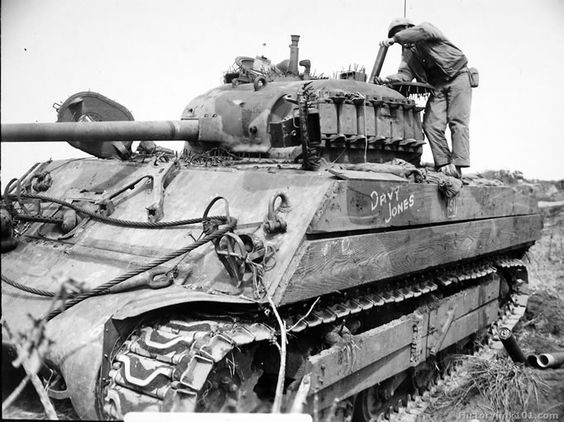 |
